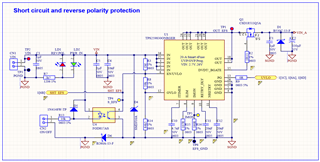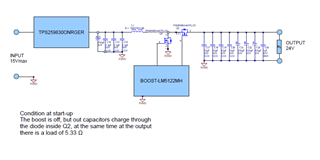Tool/software:
Hello,
I have the following problem:
when switching on in the presence of a load, the E-FUSE goes into protection, even with very small loads. If the load is inserted after switching on, everything works normally.
Obviously, the problem also exists when commanding the enable, if the load is present, by enabling the enable, the TPS goes into protection again.
I attach the diagram used.
Best Regards,
Maurizio



